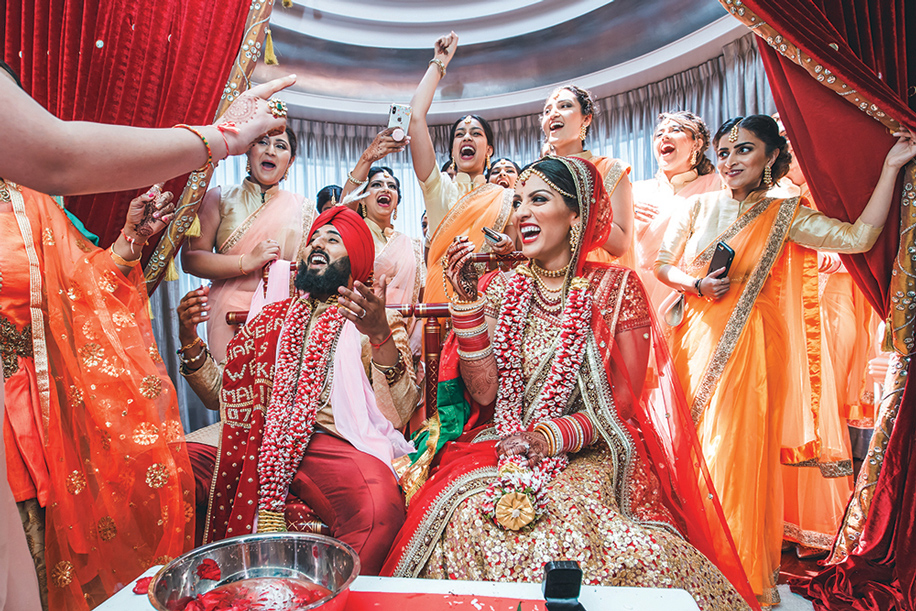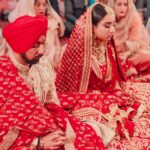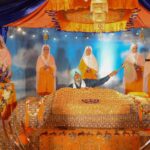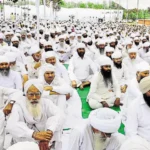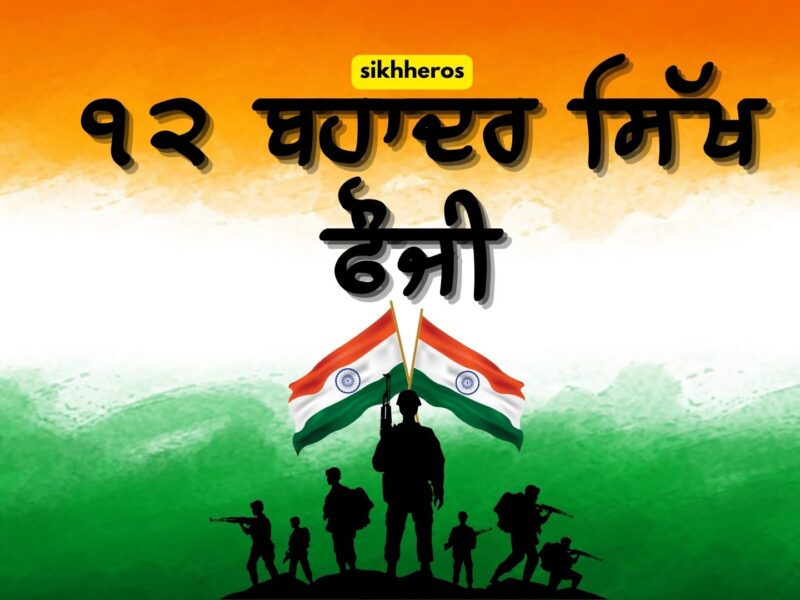When someone talking about the ‘Punjabi wedding’, the first picture which is more likely to pop up in your head is a extravagant, loud wedding ceremony fill up with food, fun and loads of dancing! Faith in me, there is lots more to the Punjabi shaadi than just that. After reading this article I am 99% certain all your myths pertain to this will be BUSTED!!
From some lesser known and unheard rituals to conventional ones and from simplest ceremonies to the much more exorbitant ones- these weddings have it all.
Roka and Thaka
The word ‘Roka’ coming from the word ‘Rokna’, which indirectly imply that now the groom and bride do stop looking out for another wedding prospects and they are fix up in an alliance. The bride’s and groom’s families visited each other’s houses and exchange savouries, sweets, dry fruits etc.
‘Thaka’ is a ceremony as a chunk of which the couple is made to sit together and shower with shagun or presents and are considered as officially engaged.
Chunni Ceremony
The members of the groom’s family visited the bride’s household with a red-coloured outfit, jewellery, gifts, sweets such as saree or lehenga-choli, along with a red chunri or chunni.
The chunni is placed over the head of bride, this tradition is denoted as chunni chadana.
Sagai or Engagement
In most Punjabi families this tradition taking place on the similar day as the chunni chadana. Certain families like it to be a intimate and private affair, while others invited a lot of guests and celebrating it elaborately. The couple exchange rings as chunk of the ceremony and presents are given to the groom and bride.
Mehendi Ceremony
Every quintessential Indian bride cannot avoid the mehendi tradition and it is an unmissable chunk of wedding functions. The bride gets henna apply on her hands and feet- usually going all out in select the best and most customizing designs.
Other than the to-be-bride other chicks (married, unmarried) and girls or women also get mehendi applied. This function taking place at the bride’s and groom’s houses, with their own set of guests.
Sangeet
Sometimes, the sangeet ceremony taking place on the similar day, post the mehendi. In certain cases, it takes palce on the separate day altogether. Every element of this ceremony is extravagant, and tooooo much fun. Games, Dancing, singing and activities keep the couple and the guests busier!
Kangana Bandhna Ceremony
This ritual taking place on the early morning of the wedding itself. A mouli is tied on the bride’s and groom’s hand in their own sweet homes respectively. It is considered as the lucky charm to ward off evil.
Chhodha Chadana
This ceremony involves a havan and all family people taking part in this ritual. The maternal mama/ uncle and his wife gift a set of 21 bangles (mostly ivory and red) to the bride.
The bangles are initially purified in rose and milk petals and later the mama put on the bangles for his niece. However, these bangles are instantly covered with the white cloth, as the bride is not supposed to see them. There is faith that seeing the bangles, before the wedding starts might incur bad luck. A traditional bride adorns these bangles for the month post her wedding.
Kalire Ceremony
This ceremony is connected to the chudha ceremony and taking place immediately after the bride wearing the bangles. This traditionally gold-coloured accessory is not only to make the bridal band stylish. It actually signify, well-being, happy conjugal fertility and life.
Haldi Ceremony
This ceremony might taking place one day early or on the morning of the wedding. On certain occasions it took place at the groom’s and bride’s home separately, while at times it’s clubbed together.
The women of the house applied a mix of turmeric, rosewater, mustard oil and sandalwood on the visible chunks of the bride’s and groom’s body. The new-age haldi traditons are full of fun, merriment, and dancing!
Ghara Ghardoli
After the haldi tradition. The bride accompain by her siblings goes to the close by temple. There, a pitcher of holy water is poured over her and she is entering the sanctum sanctorum to seek the Almoghty blessings.
Sehrabandi
Before the wedding tradition commence, the bridegroom and his family assemble for the puja. As a slice of this, the bridegroom is made to wear a turban and a sehera or headgear, which cover up his face.
Ghodi Chadhna and Ghodi Sajana
The traditional baraat involves the groom, who is riding his horse (or rather mare) and reaching the wedding venue where the tradition take place, with his close friends and family dancing as a chunk of the baraat.
Before the groom starts the journey on the mare, she is decorated and fed a mixture of jaggery and chickpeas.
